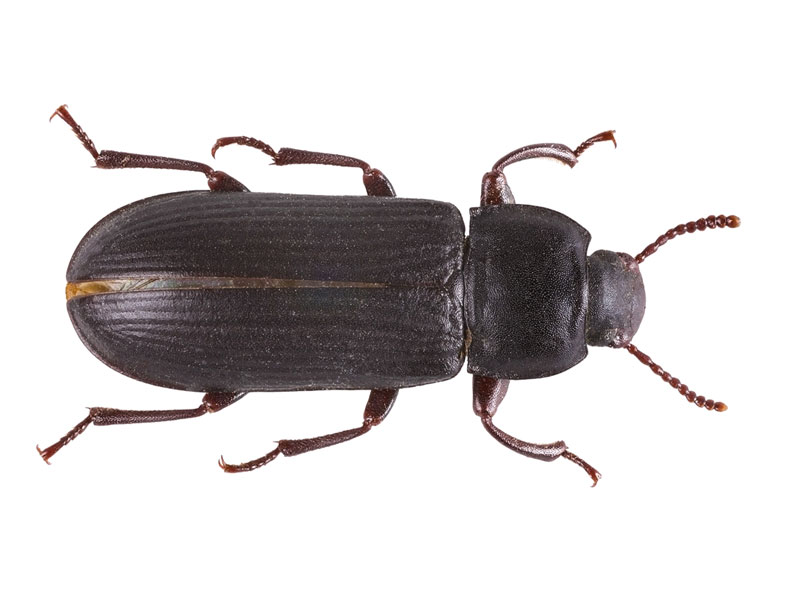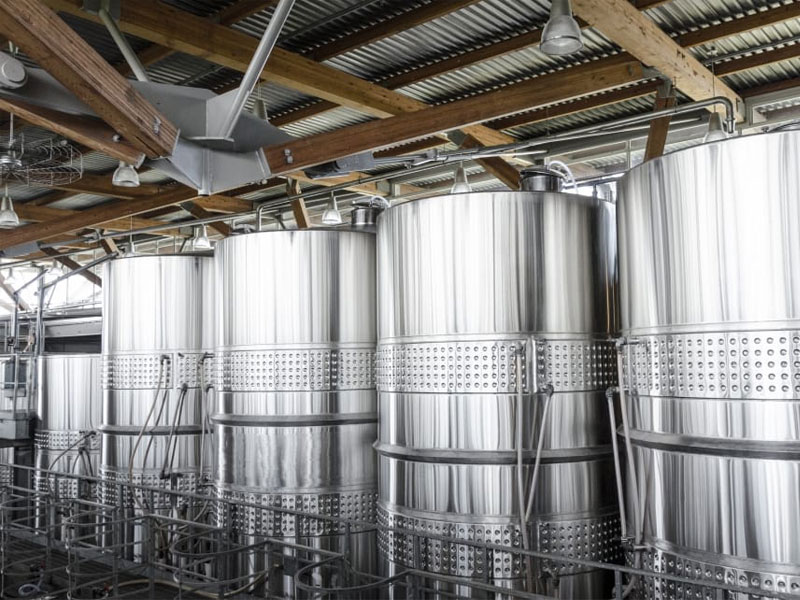Yellow mealworm beetle infestation

The Yellow Mealworm beetle (Tenebrio Molitor) is the largest among the stored product insects. It is a post-harvest pest, which is popular across farmers all over the world. It is a scavenger of damp and decaying cereals and grains, kept in wet and non-ventilated areas.
Typically, the Yellow Mealworm beetle settles in areas, where it is least disturbed. Sometimes this pest hides outdoors under storage bins, in and around chicken houses and sparrow’s nests, under sacks and other containers, where feed is stored. Inside premises this pest can be found in kitchens and dark areas, where the following products are kept: cereals and flours, cake mixes, bran, corn meal, meat scraps, etc.. Other places, where the beetle can hide are under old carpets and in straw chairs, kept in wet conditions.
The Yellow Mealworm beetle is a strong flyer and it is attracted by night lights. This makes it easy for to infest properties during the summer season, when we tend to leave the windows open more often during the late hours of the days and the evenings.
Yellow mealworm beetle control

The Yellow Mealworm beetle is typically found infesting areas, where humidity is high and the stored products kept there have started or are already decaying. This is why it is important for domestic and commercial customers to make sure there is no presence of humidity or damp areas in their homes or business premises.
For commercial customers it is important to keep cleaning and sanitisation at high levels as this pest can easily settle into old product bins and dark secluded corners, where they will not be disturbed.
For domestic customers, checking all areas in the kitchen, as well as their attics or storage areas, where straw-chairs and furniture may be kept. Also, regular cleaning in chicken houses and around sparrow nests, as these are areas, where the Yellow Mealworm beetle finds a food source and settles down.
Controlling the time range at which windows are left open during the summer season or considering a net or mesh to limit the access of the beetle in the late hours, when there is light that can attract it to enter the properties. If cleaning does not help to eradicate the infestation, treatments with professional-use-only insecticides, fumigation, as well as heat treatments with hot air are the most effective methods to get rid of the infestation.
Heat treatment with hot air may also help you to tackle humidity and any other pests that may live with it such as mould mites, booklice, etc… In cases of Yellow Mealworm infestation at commercial or industrial sites, fumigation with specific insecticide is probably the most suitable approach to eradicate the infestation, as it preserves the stored product that is infested, saving you money in the long term.
Prime Pest Control offers Yellow Mealworm beetle infestation treatment, control and prevention services to domestic and commercial customers. Our British Pest Control Association (BPCA) trained pest technicians have long years of experience tackling stored product infestations in North, South, West and East London and the surrounding areas. before we undertake any treatment we always inspect and risk assess your property or business premises first and then design an integrated pest management scheme for the eradication, control and prevention of your stored product infestation.
About Yellow mealworm beetles
The adult form of Yellow Mealworm Beetle is dark brown-to black and has a shiny polished surface. Their body is elongated and cylindrical and can reach 20 mm in length. The pupa is white and then turns yellow (not enclosed in a cocoon, like other stored product insects), while the larvae is yellow and turns darker with age. The eggs are white and bean-shaped. An adult female Yellow Mealworm beetle can lay from 275 up to 600 eggs in its life. It takes 4 to 14 days or the eggs to hatch into the next larval stage. The following pupal stage lasts between 7 and 24 days, depending on the conditions, before it turns into an adult that has a lifespan between 2 to 3 months.
The larvae of the Yellow Mealworm beetle is very resistant to low temperatures. It can endure temperatures of -5 degrees Celsius for 80 days. Also, depending on the environmental conditions it can remain in this stage for up to 2 years and then continue to the following pupal stage. It is typical for the larvae of this beetle to mature in the autumn and then to pupate in the spring, turning into adult over the summer season.
